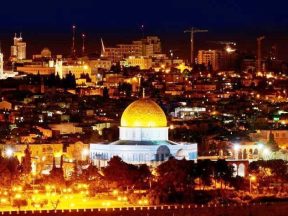Puerto Rico. Dancing in circle.
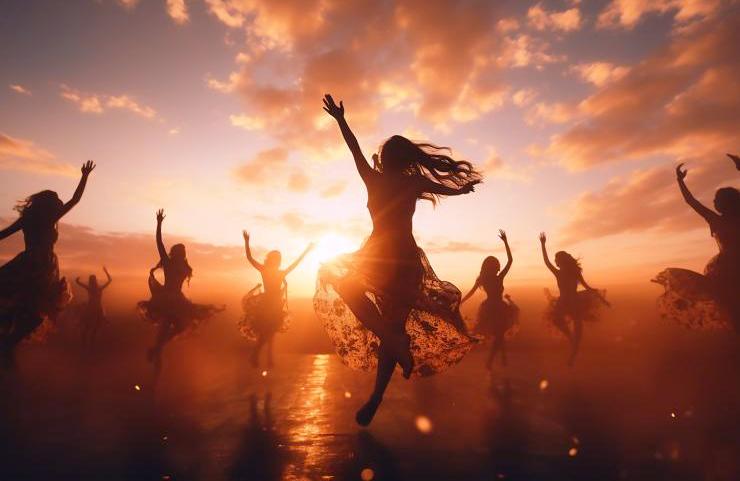
If you take a walk at sunset along the northeastern beach of Puerto Rico at the end of July, you can hear the sound of drums giving the welcome to nightfall. Groups of black people get together
in front of their houses or under coconut trees ready to dance to
the rhythm of the drums.
The smell of fried fish and cries of joy announce the Saint James feast held in Loiza, a village that combines Spanish culture and African traditions. Here, people celebrate with enthusiasm and in typical African Boriquen style (‘Boriquen’ is the indigenous Indian name for Puerto Rico) the feast of the town’s patron saint, St. James the Apostle, the
Yoruba people’s Shango.
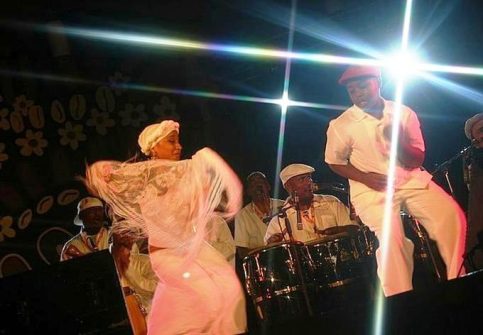
Bomba Dance in Guaynabo, Puerto Rico. CC BY-SA 2.0/ chispy2
It is an annual multi-day event that occurs around July 25, the feast day of Saint James, who is believed to have appeared in a tree trunk, years ago. An event that has been celebrated, in the inhabitants’ words, “since God walked on earth”, referring to it as a feast, whose origins are lost in the mists of time. The majority of the population in Loiza is black. Through the centuries, the joining of Yoruba and Christian elements has given rise to strong religious syncretism in this community.
In fact, in the Yoruba culture, brought by the Nigerian slaves, Shango is the deity of war and lightning, and has the power to call down fire from heaven and destroy the infidel. Shango is depicted as a warrior on horseback, just like St. James.
Three statues
There are three images representing Saint James. They are related to three different groups: Santiago de los Hombres (Saint James of the Men), Santiago de las Mujeres (Saint James of the Women), and Santiago de los Niños (Saint James of the Children).
Each of these statues are guarded, throughout the year, by three people, usually women distinguished for their devotion to the Saint. They are in charge of preparing the statues for the celebration. The statues will be carried in procession through the town from the church. The guardians of the statues enjoy widespread prestige in the village. Before celebrating the feast, preparatory novenas are held.
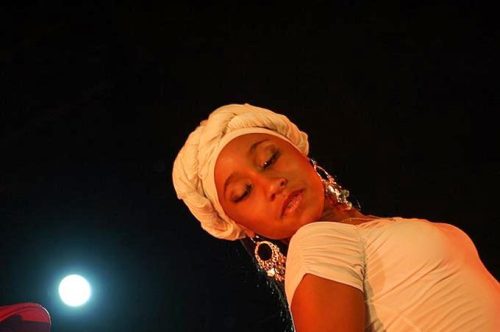
Bomba dancer in Guaynabo, Puerto Rico. CC BY-SA 2.0/ chispy2
These novena songs, are readapted to the typical African rhythm and tone, and have particular emotional and spiritual impact on the devotees. During the celebrations, people follow the three statues carried in procession through the streets of the village, singing and dancing in their traditional costumes. The three statues play a specific role in the traditional celebrations: the ‘caballero’ figure represents the force of good in the fight against evil. The ‘vejigante’ image is the antithesis of the ‘caballero’ figure, it represents evil, the devil that St. James must fight. The ‘vejigante’ mask has a grotesque facial expression with exaggerated nose and teeth and has horns on the front or on the side of the mask. The ‘vejigante’ has become a popular symbol of St. James’ feast. The ‘Viejo’ (the old man) figure, fallen into disuse by now, represents an old man wearing rags, who wanders about looking for gifts. St. James’ celebration with its processions, dances, music, and mass celebrations is still one of the most popular and traditional ‘fiestas’.’Bomba’ dancing is the main attraction during Loíza’s festival of Santiago. The black labourers, who worked on plantations created the ‘bomba’ in the 18th century as their primary social dance.
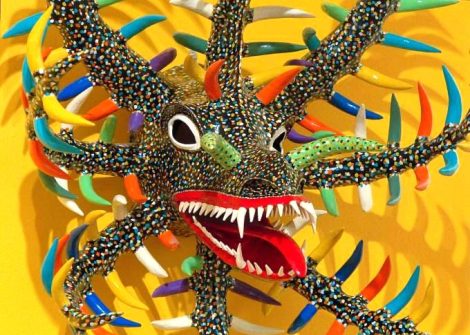
Vejigante in the Puerto Rican Museum of Art. CC BY-SA 2.0/Šarūnas Burdulis
Distinctive ‘bomba’ styles have developed in various parts of the island, such as: sikti, coembé, kalindti, yulti, cocobalé, babu, calindti, all words of African origin. Given the long history of slavery, colonialism and the attempts to strip black people of their African culture, it is important to the Puerto Ricans to highlight, by names and symbols, the African legacy. The ‘Bomba’ dance is to these people a representation of self-affirmation and an attempt to preserve and recuperate their real image and history. ‘Bomba’, among slaves living along the coastal areas where they cultivated sugar cane, was a way to reassert their dignity and recover their past. Basically ‘Bomba’ came to be a language in common, among African slaves who spoke different languages. It represented an important moment of unity and cohesion.
‘Bomba’ dances, songs, the beating of drums during the feast of St. James, usually express the alternative language, and reflect a deep social organization, an understanding of social reality and a way to express feelings of joy and concern.
Dancing in a circle
The participants of the dance create a circle that includes musicians, among them at least two drummers, and singers. The women’s voices are predominant. Dancers enter the circle and begin to dance. Next, dancers approach the drummers and offer salutes to express respect. From this point, the dancers improvise accents to challenge or converse with the high-pitched drum. The more equally matched in skill that the drummer and dancer are, the more intricate and satisfying the ‘bomba’ will be. It becomes a dialogue between dancers and drummers.
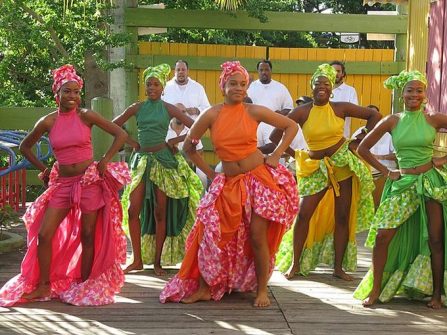
Afro-Puerto Rican women in Bomba dance dress. CC BY-SA 4.0/ Spreadofknowledge
‘Bomba’ is a body language dance. Various ‘bomba’ rhythms, verse structures, and intensities guide the dancers in movements and attitudes. Each rhythm calls for a different attitude. It is an important moment of cultural performance to the people of the village. It is also a way to express different realities: the need of a non-linguistic communication for those who are victims of social and economic oppression. The chance to express through music and dance what would be prohibited in a different context. A moment and a place where individuals through body language and music-talk feel socially free in an atmosphere of mutual respect. Still today, ‘Bomba’ reflects the African heritage brought by slaves: it is a cultural expression that resists the pressures of the modern world. ‘Bomba’ is a source of identity and dignity for people who were marginalised due to racial and class discriminations. This dance is an instrument of integration and cohesion resisting socio-political and economic pressure. St. James’ feast and the ‘bomba’ dances have kept Loiza people attached to African traditions. These celebrations, even if influenced in recent times by modernization, symbolize the dignity of a people who continue to make a significant contribution to culture. (Open Photo: 123rf)
Ester Padilla



